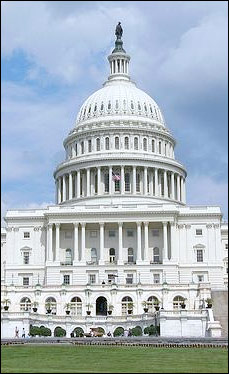All of the Senate races have now been determined, and the Democrats will lead a 55-45 majority in the next Congress, assuming Senator-Elect Angus King (I-ME) joins their caucus, as expected.
One governor’s race remains uncalled. In Washington, former Rep. Jay Inslee (D) has a 51.1-48.9% lead over Attorney General Rob McKenna (R) with still one-quarter of the vote remaining. Inslee has a 54,398 vote advantage with approximately 600,000 votes remaining. To win, McKenna would have to score a bit over 54% of the uncounted ballots. Mathematically this is certainly possible, but the trend suggests otherwise. Even if Inslee holds, the GOP gains one gubernatorial seat nationally, bringing their advantage to 30-19-1 over the Democrats and Rhode Island Independent Gov. Lincoln Chafee.
Here are the latest in the outstanding House races:
- AZ-1: The race has been called in favor of former Democratic Rep. Ann Kirkpatrick.
- AZ-2: Rep. Ron Barber (D) vs. Martha McSally (R) – The Republican challenger leads by a scant 81 votes with as many as 65,000 votes left to count. This one, obviously, can go either way as the remaining ballots will determine the winner.
- AZ-9: Kyrsten Sinema (D) vs. Vernon Parker (R) – About 70,000 ballots remain here, and Sinema’s lead has increased to 3,842 votes. To overtake the Democrat, Republican Parker would need just over 52% of the remaining ballots. This is a reasonable percentage, but Parker has yet to lead the race. Therefore, the trend favors Sinema.
- CA-7: Rep. Dan Lungren (R) vs. Ami Bera (D) – Approximately 100,000 ballots still must be counted, and the challenger’s lead is a mere 184 votes. Both men have an equal chance of winning.
- CA-36: Rep. Mary Bono Mack (R) vs. Raul Ruiz (D) – Challenger Ruiz has increased his advantage to 4,679 votes, though more than 50,000 ballots remain uncounted. To win, Rep. Bono Mack needs 55% of the remaining pool of votes. It is unlikely that she will reverse the trend.
- CA-52: Rep. Brian Bilbray (R) vs. Scott Peters (D) – In a very similar situation to that of Rep. Lungren, it’s possible that as many as 100,000 ballots are still outstanding. Peters leads by 814 votes, meaning that Bilbray needs at least 50.5% of the remainder to pull out the victory.
- FL-18: Rep. Allen West (R) vs. Patrick Murphy (D) – The congressman trails challenger Murphy by 2,456 votes with all precincts reporting. West is challenging voting irregularities in St. Lucie County, and several thousand provisional ballots remain. Unless West wins his challenge – claiming that certain precincts have been double counted – Murphy is likely to prevail.
- NC-7: Rep. Mike McIntyre (D) vs. David Rouzer (R) – The congressman leads by 533 votes, with more than 5,000 to count. Many of those are from the challenger’s home county of Johnston, where he performed strongly. There is an outside chance that this election could turn around.
- UT-4: Rep. Jim Matheson (D) vs. Mia Love (R) – Though challenger Love has already conceded, counting of the remaining 50,000 votes continues. Matheson leads with a 2,646 vote margin, meaning Love needs at least 53% of the remainder, which is unlikely to happen based upon the already known voting pattern.








